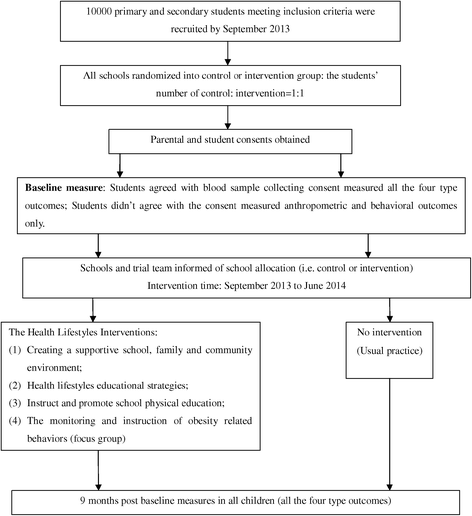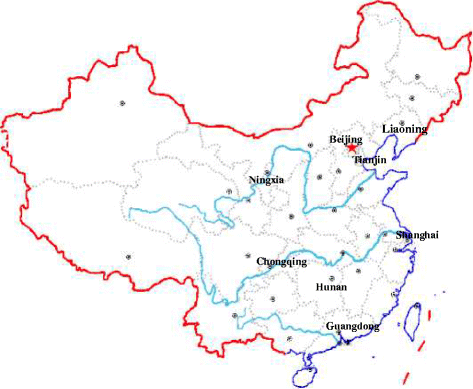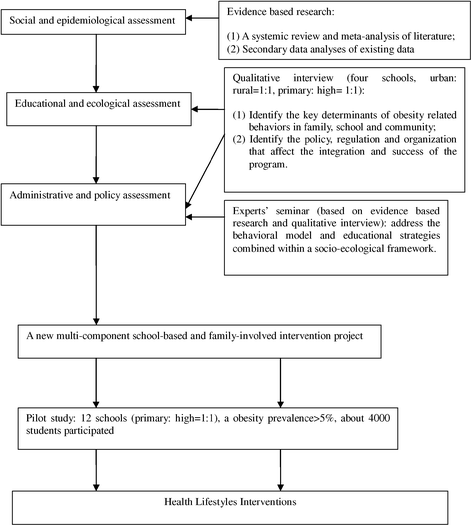A national school-based health lifestyles interventions among Chinese children and adolescents against obesity: rationale, design and methodology of a randomized controlled trial in China
- PMID: 25885323
- PMCID: PMC4355994
- DOI: 10.1186/s12889-015-1516-9
A national school-based health lifestyles interventions among Chinese children and adolescents against obesity: rationale, design and methodology of a randomized controlled trial in China
Abstract
Background: The prevalence of obesity among children and adolescents has been rapidly rising in Mainland China in recent decades, both in urban and rural areas. There is an urgent need to develop effective interventions to prevent childhood obesity. Limited rigid data regarding children and adolescent overweight prevention in China are available. A national random controlled school-based obesity intervention program was developed in the mainland of China.
Methods/design: The study was designed as a national multi-centered cluster randomized controlled trial involving more than 70,000 children and adolescents aged 7-18 years from 7 provinces in China. In each center, about 12-16 primary and secondary schools, with totally at least 10000 participants were randomly selected (Primary: Secondary = 1:1). All of the selected schools were randomly allocated to either intervention or control group (Intervention: Control = 1:1).The multi-components school-based and family-involved scheme was conducted within the intervention group for 9 month, while students in the control group followed their usual health practice. The intervention consisted of four components: a) Create supportive school and family environment, b) Health lifestyles education and related compulsory physical activities, c) Instruct and promote school physical education, d) Self-monitor obesity related behaviors. Four types of outcomes including anthropometric, behavioral, blood chemical and physical fitness were measured to assess the effectiveness of the intervention program.
Discussion: This is the first and largest multi-centered school-based obesity intervention program with the consideration of geographical and social-demographic characteristics of the rapidly increased obesity prevalence of Chinese children and adolescent. The intervention is based on Social Cognitive Theory and Social-Ecological Model of Health, and follows a stepwise approach guided by PRECEDE-PROCEED (P-P) Model and Intervention Map. The results of and lesson learned from this study will help guide future school-based national childhood obesity prevention programs in Mainland China.
Trial registration: January 22, 2015;
Registration number: NCT02343588.
Figures



References
-
- Zhai FY, He YN, Ma GS, Li YP, Wang ZH, Hu YS, et al. [Study on the current status and trend of food consumption among Chinese population] Zhonghua Liu Xing Bing Xue Za Zhi. 2005;26:485–8. - PubMed
Publication types
MeSH terms
LinkOut - more resources
Full Text Sources
Other Literature Sources
Medical
Miscellaneous

